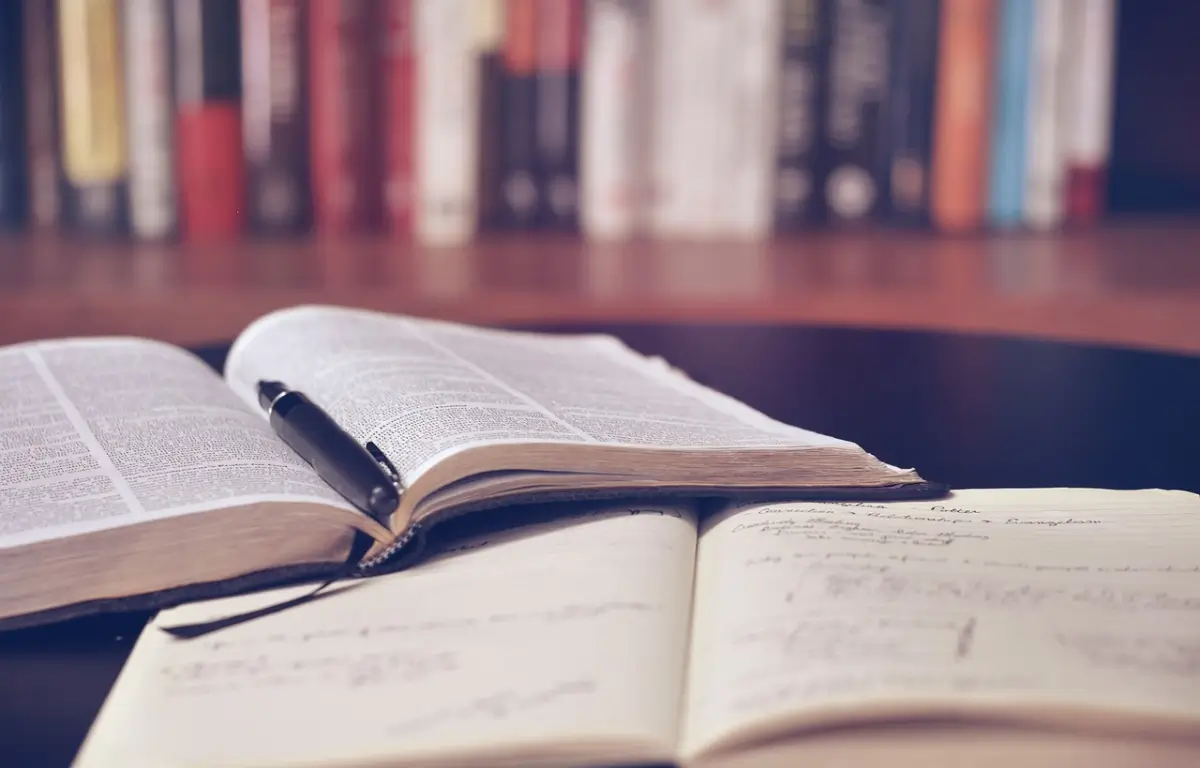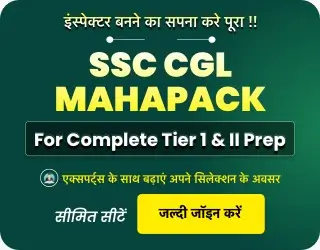For the year 2025, Bharat Heavy Electricals Limited (BHEL) has released BHEL Artisan Syllabus along with the official notification, which contains the details about the chapters and topics of each trade. In this article, the syllabus is explained trade-wise along with the exam pattern, which helps candidates plan their preparation better for the examination scheduled for mid-September. All the topics mentioned in the syllabus must be studied well to score good marks in the computer-based examination. Scroll down the article to get more details about the exam format.
BHEL Artisan Syllabus and Exam Pattern 2025
To be selected for Fitter, Welder, Turner, Machinist, Electrician, Electronics Mechanic, and Foundryman, candidates must know the selection process under BHEL Artisan Recruitment 2025. Candidates must have go through the computer-based examination, which is scheduled for 12th January 2026, followed by a skill test. BHEL Artisan Syllabus 2025 consists of various topics related to Trades, Engineering calculation, and Reasoning ability. Candidates must go through the topics and prioritize sections according to the weightage in the examination.
| BHEL Artisan Syllabus and Exam Pattern 2025 Overview | |
| Conducting Body | Bharat Heavy Electricals Limited (BHEL) |
| Post Name | Fitter, Welder, Turner, Machinist, Electrician, Electronics Mechanic, and Foundryman |
| Vacancy | 515 |
| Exam Date | 12th January 2026 |
| Total Questions | 120 |
| Total Marks | 120 |
| Duration | 90 minutes |
| Marking Scheme | Correct Answer: 1 mark Incorrect Answer: 0.25 |
| Selection Process | Computer-Based Test, Skill Test and DV |
| Official website | www.careers.bhel.in |
BHEL Artisan Exam Pattern 2025
Candidates who are preparing for the BHEL Artisan Examination must know the exam pattern along with the marking scheme.
- There will be 120 questions for 120 marks
- The duration of the examination is 90 minutes
- 0.25 marks will be deducted for every incorrect attempt.
| Subjects | Questions | Marks | Duration |
| Trade Related Questions | 70 | 70 | 90 minutes |
| Engineering Calculations | 30 | 30 | |
| Reasoning | 20 | 20 | |
| Total | 120 | 120 |
BHEL Artisan Syllabus 2025
All the questions in BHEL Artisan Exam will be based on the topics listed in BHEL Artisan Syllabus 2025. So, it is very important for candidates to study all these topics carefully and make sure they understand them well to tackle the examination.
Syllabus For Electrician Trade- Theory (70 Marks)
1. Basic Electrical Engineering
- Ohm’s Law, Kirchhoff’s Laws
- Resistance, Conductance, Power, Energy, Efficiency
- Series and Parallel Circuits, AC/DC Circuits
- Electrical Units and Measurements
2. Electrical Machines
- Types of Motors: DC Motor, Induction Motor, Universal Motor
- Transformers – working principle, types, and applications
- Alternators and Generators
- Motor Starters and Speed Control Methods
Wiring & Installation
- Types of wiring: Cleat, Casing-Capping, Conduit
- Wiring Accessories and their symbols (MCB, DB, Fuse, etc.)
- Wiring diagrams – single line and schematic
- Fault finding in domestic and industrial wiring
- Earthing techniques.
Tools, Safety & Maintenance
- Hand tools and their uses
- PPE (Personal Protective Equipment)
- Electrical Safety Practices (shock prevention, fire hazards)
- Preventive and breakdown maintenance
Electrical Drawing & Reading
- Reading and interpreting circuit diagrams and schematics
- Panel wiring diagrams
- Symbols used in electrical drawings
Measuring Instruments
- Multimeter /Digital Multimeter, Megger, Voltmeter, Ammeter, Wattmeter
- Energy Meter
- Clamp Meter – usage and precautions
Earthing and Grounding
- Purpose and methods of earthing
- Types of earthing (Pipe, Plate, Rod)
- Earth resistance – permissible values and testing
Fundamentals of Electronics
- Diodes, Rectifiers, LEDs
- Transistors (basic function)
- Relays and Contactors
Batteries and UPS
- Battery types, charging methods, and safety
- Inverter and UPS – working and applications
Industrial Electricals
- Basics of PLC, control panels
- Electrical motors used in industry (HT/LT)
- Electrical machines manufactured by BHEL
Engineering Drawing & Workshop Calculation (30 Marks)
- Reading of Electrical Sign and Symbols.
- Reading of Electrical Circuit Diagram & Reading of Electrical Layout drawing
- Sketches of Electrical components.
- Reading of Electrical wiring diagram and Layout diagram. Reading of Electrical earthing diagram.
- Drawing the schematic diagram of plate and pipe earthing.
- Drawing of Electrical circuit diagram.
- Drawing of Block diagram of Instruments & equipment of trades.
Workshop Calculation:
- Unit, Fractions
- Square root, Ratio and Proportions, Percentage
- Algebra – Addition, subtraction, multiplication & division, Theory of indices, algebraic formula
- Mensuration – Area and perimeter of square, rectangle and parallelogram, Area and perimeter of Triangles
- Profit and loss – Simple problems on profit & loss, Simple and compound interest
- Estimation and Costing
- Material Science – Types metals, types of ferrous and non ferrous metals
- Heat & Temperature and Pressure – Concept of heat and temperature, effects of heat, difference between heat and temperature, boiling point & melting point of different metals and non-metals
- Elasticity – Elastic, plastic materials, stress, strain and their units and young’s modulus
Syllabus For Electronics Mechanic Trade- Theory (70 Marks)
- Hand tools and their uses: Identify, tools; filing, hacksawing, fitting, drilling, and basic metalwork.
- Basics of AC and Electrical Cables: Identify, test, measure, and prepare electrical cables; basic electrical concepts and cable specs.
- Single range meters -set meters; check continuity; measure voltage and current.
- Cells & Batteries: Identify terminals, measure voltage, charge/discharge, test readiness, types and specifications.
- AC & DC measurements: Use multimeter, CRO/DSO, and function generator to measure and observe electrical parameters; learn meter types, controls, and maintenance
- Digital Storage Oscilloscope: Identify controls, measure signal parameters, print signals, and build/test function generator; learn features and applications of DSO and CRO, soldering/ De-soldering and Various Switches Practice soldering/de-soldering, repair PCB tracks, identify and use various switches, and make switch panel boards.
- Active and Passive Components: Identify and test resistors, inductors, capacitors, relays, and circuit breakers; Ohm’s and Kirchhoff’s laws; RC circuits and resonance circuits.
- Power Supply Circuits: Test diodes and transformers; build and test rectifiers; measure ripple; voltage regulators; transformer types and diode basics.
10. IC Regulators - Test diodes and transformers, build and test rectifiers and voltage regulators, measure ripple and regulation. Construct fixed and variable IC-based voltage regulators (78/79 series, LM317T, IC723). diode biasing, transformer types, rectifier efficiency, and regulator principles.
- Transistor: Identify and test transistors, understand construction and terminals, learn biasing, characteristics, and applications as switches and amplifiers.
- Amplifier: Build and test various transistor amplifiers (fixed, emitter, voltage divider bias, common emitter, collector, biasing, configurations, characteristics, gain, and feedback.
- Oscillators: Build and test Colpitts, Hartley, RC phase shift, and crystal oscillators; demonstrate stable, monostable, and bistable multivibrators; understand positive feedback.
- Wave shaping circuits: Build and test shunt, series, dual clippers, clampers, and Zener diode peak clippers;
- Power Electronic Components: Identify power components; build and test FET amplifiers, SCR circuits, TRIAC dimmers, and UJT oscillators;, terminals, and applications.
- MOSFET & IGBT: Identify and test MOSFETs and IGBTs, characteristics, switching speed, and differences from FETs
and transistors. - Opto Electronics: Test LEDs, circuits with photovoltaic cells, photodiodes, and phototransistors; characteristics and applications of optical sensors and opto-isolators.
- Basic Gates: truth tables of logic gates; build gates using NAND/NOR; test digital ICs; learn digital basics and number systems.
- Combinational Circuits: Build and test adders, subtractors, decoders, encoders, multiplexers, and demultiplexer.
- Flip Flops: Identify and test various flip-flop ICs (RS, D, T, JK), latches, and understand timing and applications.
- Op-Amp & Timer 555 Applications: Test analog ICs, Op-Amp circuits (amplifiers, integrators, comparators), and construct timer 555 circuits (astable, monostable, VCO, PWM).
- Electronic Cables & Connectors: Types of cables/connectors, soldering, testing, and PC/network cable setups.
- Basic SMD (2, 3, 4 terminal components): Identify, de-solder, and solder 2, 3, 4 terminal SMD parts; check PCB continuity; find loose solder and broken tracks. Learn SMD advantages, reflow soldering, hardware selection, and inspection.
- SMD Soldering and De-soldering: Set up SMD soldering station, use crimping tools for various IC packages, solder/de-solder ICs, rework defective components, inspect solder quality, and understand SMT equipment like pick-andplace machines and reflow ovens.
- PCB Rework: Inspect, test, and repair single and double-layer PCBs. Detect solder joint defects, fix damaged tracks, pads, and solder masks. Learn ESD prevention and non-soldering interconnections.
- Protection devices: Identify types of fuses, holders, MCBs, ELCBs, contactors, and relays; understand fuse ratings and working voltages. Test MCBs, ELCBs, DC motors, and stepper motors; understand motor control and protection devices.
- Communication electronics: Practice AM/FM modulation and demodulation, test transmitters/receivers, study antennas, modulation types, and digital signal techniques.
- Microcontroller (8051): Identify ICs, configure ports, blink LEDs, use timers, write simple programs. Learn architecture, memory, registers, and compare 8051/8052. Intro to PIC.
- Sensors, Transducers used in IoT Applications: Identify and use sensors (temperature, proximity, load cells). Measure and detect signals. Basics of
transducers. Connect and program microcontroller (LED, buzzer, sensors). Intro to IoT and smart systems. - Analog IC Applications: Build simple projects using ICs 741, 723, 555, 7106, 7107. Examples: laptop protector, battery monitor, metal detector, smoke detector, water level controller, etc. Focus on component use and IC data. (45 Hrs practical + 9 Hrs discussion)
- Digital IC Applications
- Fiber optic communication
- Digital Panel Meter
- Use LED/LCD displays with driver ICs to show text and measure current.
- Learn seven-segment displays, multiplexing, and DPM ICs.
- SMPS and Inverter: Identify, dismantle, test, troubleshoot, repair, install SMPS and inverters. Build/test DC-DC converters.Learn working principles.
- UPS: Connect and test battery and load; identify UPS components and circuits; monitor voltages; perform backup load test. UPS types, principles, specs, installation, and protections.
- Solar Power (Renewable Energy System): Wire solar controller, connect batteries & inverter, test solar panel with load, install solar inverter, measure charging time. Learn solar energy principles, PV cells, modules, systems, controllers, and safety.
- LED Lights: Identify and connect LED stacks and circuits. Series/parallel LED strings and matrix. Test voltages. LED panel types and driving.
- LCD and LED TV: Identify, dismantle, troubleshoot, repair, and test TVs and remotes. Connect external devices. Learn basics of TV types, interfaces, and remotes.
Engineering Drawing & Workshop Calculation (30 Marks)
- Engineering Drawing: Engineering Drawing and Drawing Instruments; -Conventions, Sizes and layout of drawing sheets, Title Block, its position and content, Drawing Instrument.
- Free hand drawing of; Geometrical figures and blocks with dimension, transferring measurement from the given object to the free hand sketches., Free hand drawing of hand tools and measuring tools.
- Lines – Types and applications in drawing
- Geometrical figures; Angle, Triangle, Circle, Rectangle, Square, Parallelogram. Lettering & Numbering – Single Stroke, double stroke, inclined, electronic Circuit Diagram, Electronic Layout drawing, electronics Sign and Symbols, Electronics components, Block diagram of Instruments & equipment of trades.
Workshop Calculation
- Unit, Fractions
- Square root, Ratio and Proportions, Percentage
- Algebra – Addition, subtraction, multiplication & division, Theory of indices, algebraic formula
- Estimation and Costing
- Material Science – Types metals, types of ferrous and non ferrous metals
- Heat & Temperature and Pressure – Concept of heat and temperature, effects of heat, difference between heat and temperature, boiling point & melting point of different metals and non-metals
- Trigonometry
Syllabus For Fitter Trade – Theory (70 Marks)
- Marking off and layout tools, dividers, scribing block: description, classification, material, care & maintenance.
- Try square, ordinary depth gauge, protractor– description, uses and cares.
- Uses, care & maintenance of cold chisels- materials, types, cutting angles, power Saw, band saw, Circular saw machines used for metal cutting.
- Micrometer- outside and inside – principle, features, parts graduation, reading, use and care, micrometer depth gauge, parts, graduation, reading, use and care. Digital micrometer, Vernier calipers, principle, construction, graduations, reading, use and care. Vernier bevel protractor, construction, graduations, reading, use and care, dial Vernier Caliper, Digital Vernier caliper, Vernier height gauge: material construction, parts, graduations (English & Metric) uses, care and maintenance.
- Drilling processes: common type (bench type, pillar type, radial type), gang and multiple drilling machine, Determination of tap drill size, marking and measuring tools , wing compass, tinman9s square tools, snips, types and uses, Tinmans hammers and mallets type-sheet metal tools, types, specifications, uses.
- Trammel- description, parts, uses.
- Hand grooves- specifications and uses, sheet and wire gauge, precautions in electric and gas welding. (Before, during, after), safety equipment and their uses.
- Machines and accessories, welding transformer, welding generators, Welding hand tools: Hammers, welding description, types and uses, description, principle, method of operating, carbon dioxide welding.
- H.P. welding equipment: description, principle, method of operating, L.P. welding equipment: description, principle, method of operating.
- Types of Joints- Butt and fillet as per BIS SP:46-1988 specifications. Gases and gas cylinder description, kinds, main difference and uses, setting up parameters for ARC welding machines-selection of Welding electrodes.
- Oxygen acetylene cutting – machine description, parts, uses, method of handling cutting torchdescription, parts, function and uses.
- Drill- material, types, (Taper shank, straight shank) parts and sizes, Drill angle-cutting angle for different materials, cutting speed feed, R.P.M. for different materials, Drill holding devices – material, construction and their uses, Drill troubles: causes and remedy. Drill kinds: Fraction, metric, letters and numbers, grinding of drill, counter sink, counter bore and spot facing-tools and nomenclature,
- Reamer – material, types (Hand and machine reamer), kinds, parts and their uses, Determining hole size (or reaming), Reaming procedure.
- Screw threads: terminology, parts, types and their use, Screw pitch gauge: material, parts and uses, taps british standard (B.S.W., B.S.F., B.A. & B.S.P.) and metric /BIS (coarse and fine) material, Parts (shank body, flute, cutting edge), equality of lips, correct clearance, dead centre, length of lips.
- Grinding wheel: Abrasive, grade structures, bond, specification, use, mounting and dressing, Selection of grinding wheels. Bench grinder parts and use.
- Interchange ability: Necessity in Engg, field definition, BIS Definition, types of limit, terminology of limits and fits- basic size, actual size, deviation, high and low limit, zero line, tolerance zone, Different standard systems of fits and limits. British standard system, BIS system.
- Maintenance: -Total productive maintenance, Autonomous maintenance, Routine maintenance, Maintenance schedule, Retrieval of data from machine manuals, Preventive maintenance-objective and function of Preventive maintenance, Section inspection, Visual and detailed, lubrication survey, system of symbol and colour coding, Revision, simple estimation of materials, use of handbooks and reference table, Possible causes for assembly failures and remedies, Installation, maintenance and overhaul of machinery and engineering equipment, templates and Radius/fillet gauge, feeler gauge, hole gauge, and their uses, care and maintenance.
- Metallurgical and metal working processes such as Heat treatment.
- Various heat treatment methods – normalizing, annealing, hardening and tempering, purpose of each method, tempering colour chart, annealing and normalizing, Case hardening and carburising and its methods, process of carburising (solid, liquid and gas), gauges and types of gauge commonly used in gauging finished product, Method of selective assembly 8Go9 system of gauges, hole plug basis of standardization.
Engineering Drawing & Workshop Calculation (30 Marks)
- Engineering Drawing: Engineering Drawing and Drawing Instruments;-Conventions, Sizes and layout of drawing sheets, Title Block, its position and content, Drawing Instrument. Free hand drawing of Geometrical figures and blocks with dimensions, transferring measurements from the given object to the free hand sketches., Freehand drawing of hand tools and measuring tools.
- Lines: Types and applications in drawing
- Geometrical figures: Angle, Triangle, Circle, Rectangle, Square, Parallelogram. Lettering & Numbering – Single Stroke, double stroke, inclined.
- Reading of dimension and Dimensioning Practice: Types of arrowhead, Leader line with text, Position of dimensioning (Unidirectional, Aligned), Concept of axes plane and quadrant, Concept of Orthographic and Isometric projections, Method of first angle and third angle projections and Symbolic representation different symbols used in the related trades.
Workshop Calculation
- Calculation: Unit, Fractions, Square root, Ratio and Proportions, Percentage
- Algebra: Addition, subtraction, multiplication & division, Theory of indices, algebraic formula
- Mensuration: Area and perimeter of square, rectangle and parallelogram, Area and perimeter of Triangles, Area and perimeter of circle, semi-circle, circular ring, sector of circle, hexagon and ellipse, Surface area and volume of solids – cube, cuboid, cylinder, sphere and hollow cylinder, Finding the lateral surface area, total surface area and capacity in litres of hexagonal, conical and cylindrical shaped vessels
- Levers and Simple machines, Simple machines: Effort and load, mechanical advantage, velocity ratio, efficiency of machine, relationship between efficiency, velocity ratio and mechanical advantage
- Trigonometry: Measurement of angles, Trigonometrical ratios, Trigonometrical tables
- Centre of gravity: Centre of gravity and its practical application
- Area of cut out regular surfaces and area of irregular surfaces, Area of cut out regular surfaces: circle, segment and sector of circle, Related problems of area of cut out regular surfaces – circle, segment and sector of circle, Area of irregular surfaces and application related to shop problems
- Elasticity: Elastic, plastic materials, stress, strain and their units and young9s modulus, Elasticity – Ultimate stress and working stress
- Heat treatment and advantages, Heat treatment: Different heat treatment process – Hardening, tempering, annealing, normalising and case hardening
- Estimation and Costing: Simple estimation of the requirement of material etc., as applicable to the trade, Problems on estimation and costing.
Syllabus For Foundrymen Trade- Theory (70 Marks)
- Introduction to Foundry: Principles, types, advantages of metal castings, quality assurance, and importance of quality.
- Gating System: Elements, types, functions, risers, feeder’s fluxes, chills, directional solidification, and exothermic materials.
- Sand Testing and Casting Process: Types of sand, moisture content test, permeability test, etc.
- Casting Process: Pressure die casting, resin bonded sand mold casting, etc, CO2 (Carbon Dioxide) Moulding process.
- Mould Coating: Types and process of applying coatings, Removal of cores, cleaning, and inspection of casting.
- Mould and Moulding Process: Types of moulds like green sand and dry sand moulds.
- Parts of Mould: Pouring basin, ingate, cope, etc.
- Hand Moulding types: Bench moulding, floor moulding.
- Machine Moulding: Hand-operated and power-operated machines.
- Moulding Sand: Properties like porosity, permeability, collapsibility, and main ingredients.
- Sand: Different types, shapes, and ingredients.
- Foundry Tools: Marking, measuring, and other types of tools.
- Patterns: Various types of patterns used in casting.
- Furnaces: Types used for melting and refining such as induction furnace, VAD, Melting Charge Calculation for cast iron and steel, Non-Ferrous Metals casting processes.
- Heat Treatment Furnaces: Fundamentals and types like normalizing, tempering.
- Iron-Carbon Equilibrium Diagram: Carbon steel phases and microstructure.
- Occupational Safety and Health: Causes of accidents and fire, use of personal protective equipment (PPE).
Engineering Drawing & Workshop Calculation (30 Marks)
- Units, Fractions
- Square root, Ratio and Promotions, Percentage
- Material Science
- Mass, Weight, Volume and Density
- Work, Power and Energy
- Mensuration
- Levers and Simple Machines
- Trigonometry
Engineering Drawing
- Drawing Conventions, Sizes and Scales of a drawing
- Drawings Instruments (2D & 3D Tools)
- Projection Systems (Orthographic & Isometric views), Sectional Views and Assembly Views
- Various types of Lines and free-hand drawing
- Drawing of Geometrical Figures
- Dimensioning (Position, Sizing etc.), Concepts of dimensional Tolerances
- Concept and Reading of an Engineering Drawing
- Symbolic Representation (Surface Roughness, Cylindricity, Concentricity etc.)
BHEL Artisan Syllabus & Exam Pattern PDF
Candidates can download BHEL Artisan Syllabus 2025 with exam pattern PDF from the link given below, which includes all the important topics you have to study for the exam. Go through each topic carefully and start your preparation based on the subjects mentioned.



 Bihar Police Havildar Clerk Syllabus &am...
Bihar Police Havildar Clerk Syllabus &am...
 Haryana Police Constable Syllabus 2026 a...
Haryana Police Constable Syllabus 2026 a...
 OSSSC Excise Constable Syllabus 2026, Ch...
OSSSC Excise Constable Syllabus 2026, Ch...






